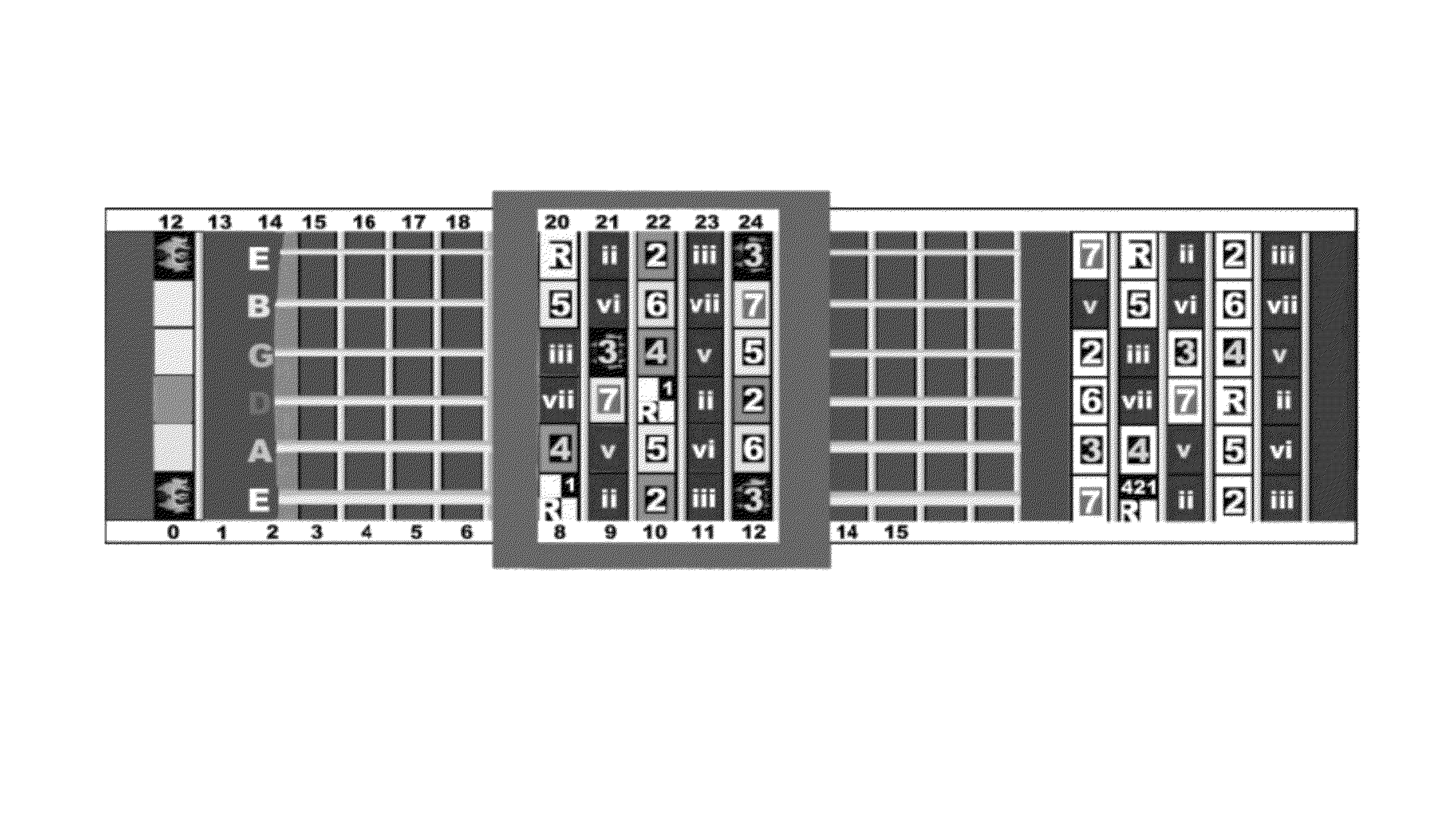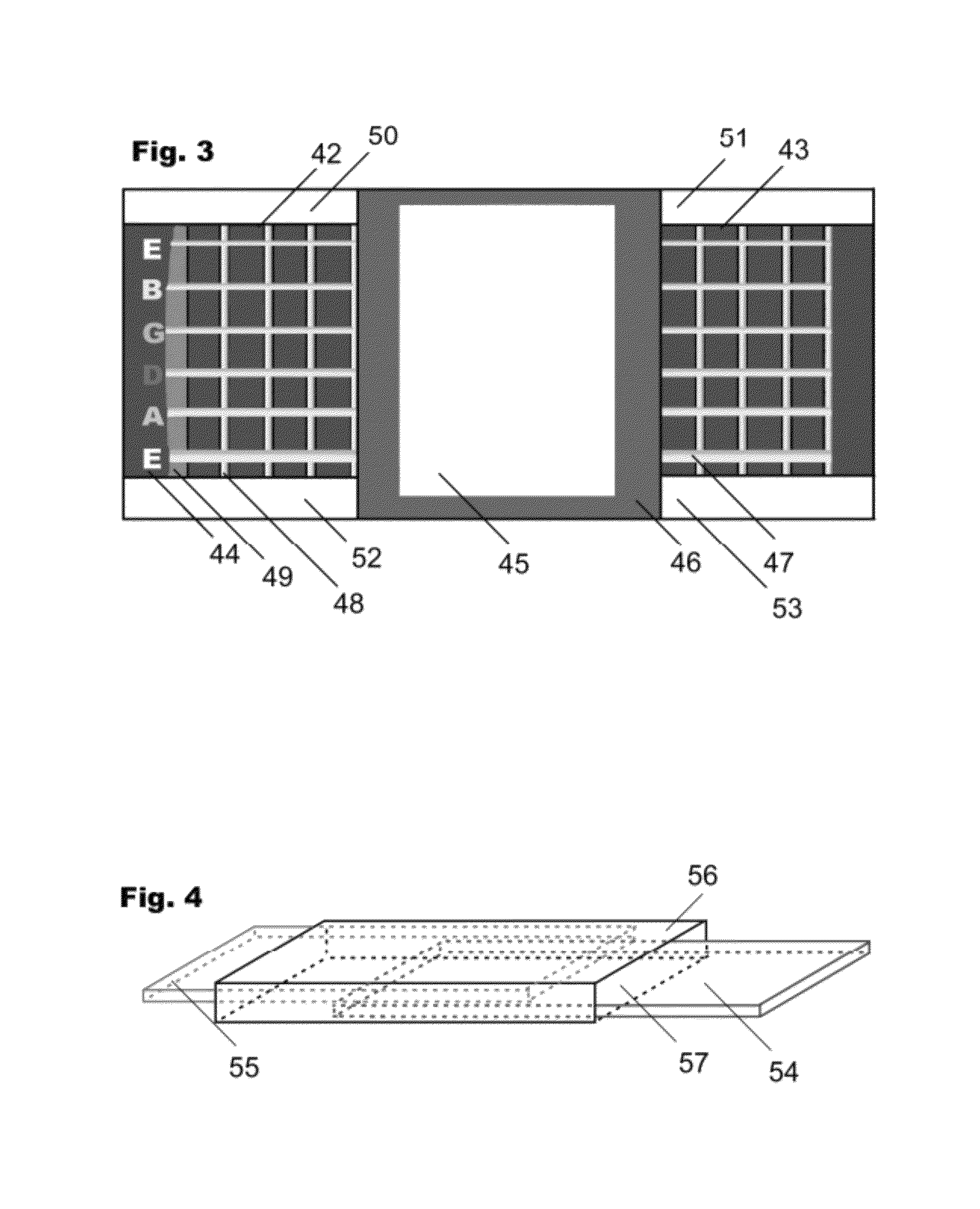Fret runner
a runner and runner technology, applied in the field of music education, can solve the problems of wasting time, wasting time, spinning your wheels, etc., and achieve the effect of quick and easy grasping concepts, easy identification, and easy telling
- Summary
- Abstract
- Description
- Claims
- Application Information
AI Technical Summary
Benefits of technology
Problems solved by technology
Method used
Image
Examples
Embodiment Construction
Embodiment as Shown in FIGS. 1 Through 12
[0055]The images and descriptions below represent only one possible embodiment of the invention. Accordingly, the scope of the invention should be determined not by the embodiment(s) illustrated or by their description(s), but by the appended claims and their legal equivalents.
[0056]The Color Board
[0057]FIG. 1 shows a plan view of an alignable insert referred to in this document as the Color Board. As shown the Color Board is comprised of seven (7) features or elements which are printed or otherwise displayed on a base 54 of plastic, wood, ceramic or other suitable material. In the depicted embodiment the length and width of the base are equal to the length and width of a second alignable insert as shown in FIG. 2. The flexibility and thickness of the base is a question of aesthetics rather than function except that the device must be strong enough to hold up to its intended use. Thus the base could be laminated paper or a heavier material. I...
PUM
 Login to View More
Login to View More Abstract
Description
Claims
Application Information
 Login to View More
Login to View More - R&D
- Intellectual Property
- Life Sciences
- Materials
- Tech Scout
- Unparalleled Data Quality
- Higher Quality Content
- 60% Fewer Hallucinations
Browse by: Latest US Patents, China's latest patents, Technical Efficacy Thesaurus, Application Domain, Technology Topic, Popular Technical Reports.
© 2025 PatSnap. All rights reserved.Legal|Privacy policy|Modern Slavery Act Transparency Statement|Sitemap|About US| Contact US: help@patsnap.com



